Fly Fishing in Scotland with Al Peake of Twin Peakes
One need only glance at a map of Scotland to see that there is a lot of water in a relatively small geographical area. In addition to the celebrated Lochs Lomond, Ness and Leven, Scotland’s crumpled, glacier-raked topography is striated with rivers large and small, not to mention the numerous sea and hill lochs. Which makes for a tremendous variety of fish, principally trout, salmon, and grayling, all ideal targets for fly fishing.
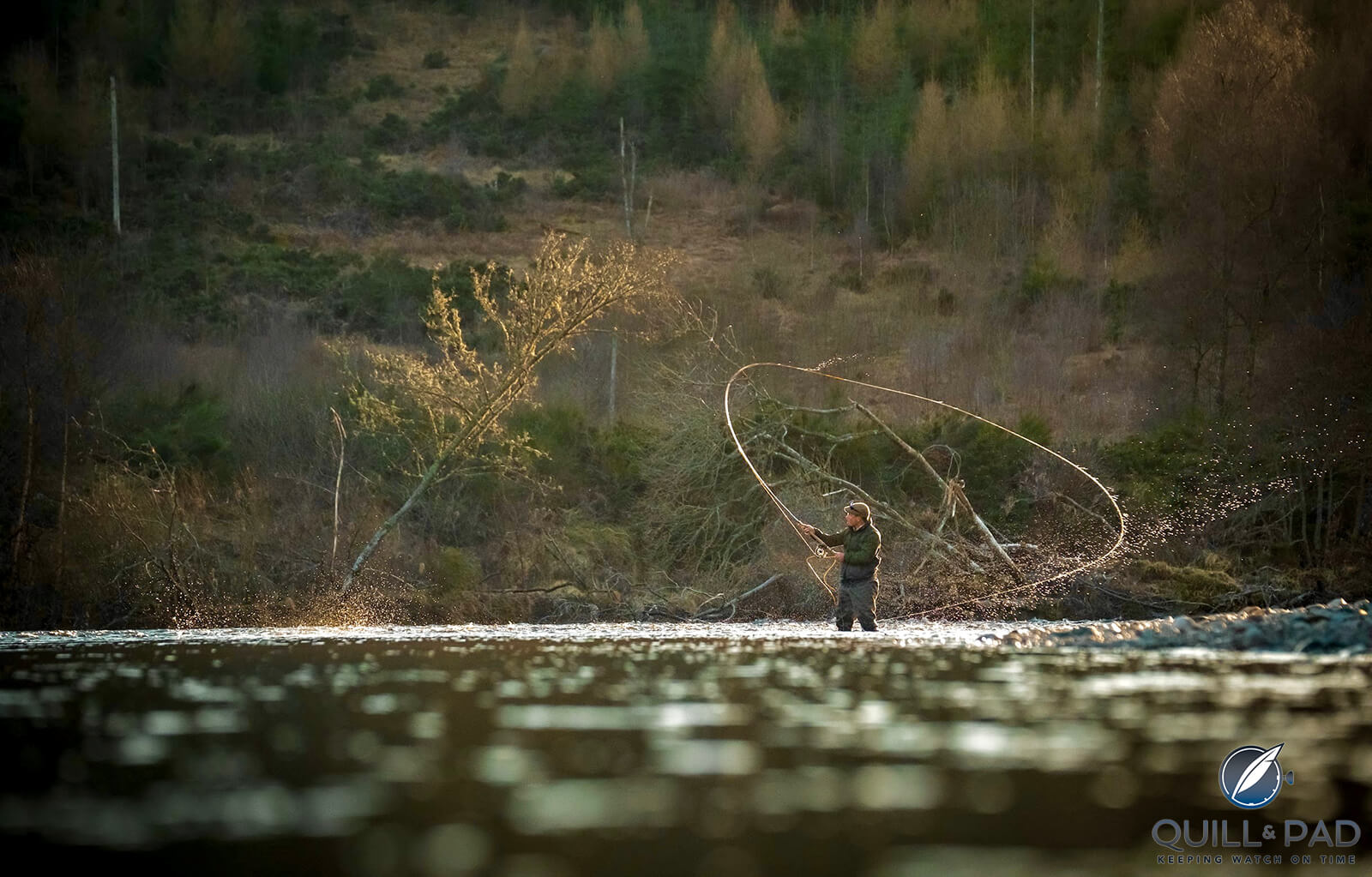
A perfect loop: Spey casting on the River Dee
There are 170 rivers that hold salmon in Scotland, but the principal salmon rivers are considered to be the Tweed, the Tay, the Dee, and the Spey – the Tay being famous for the largest salmon ever caught in Scotland (64lb by Georgina Ballantine in 1922), the Spey for its association with Spey casting, and the Dee for its Royal associations ever since Albert and Victoria acquired Balmoral Castle as their summer residence.
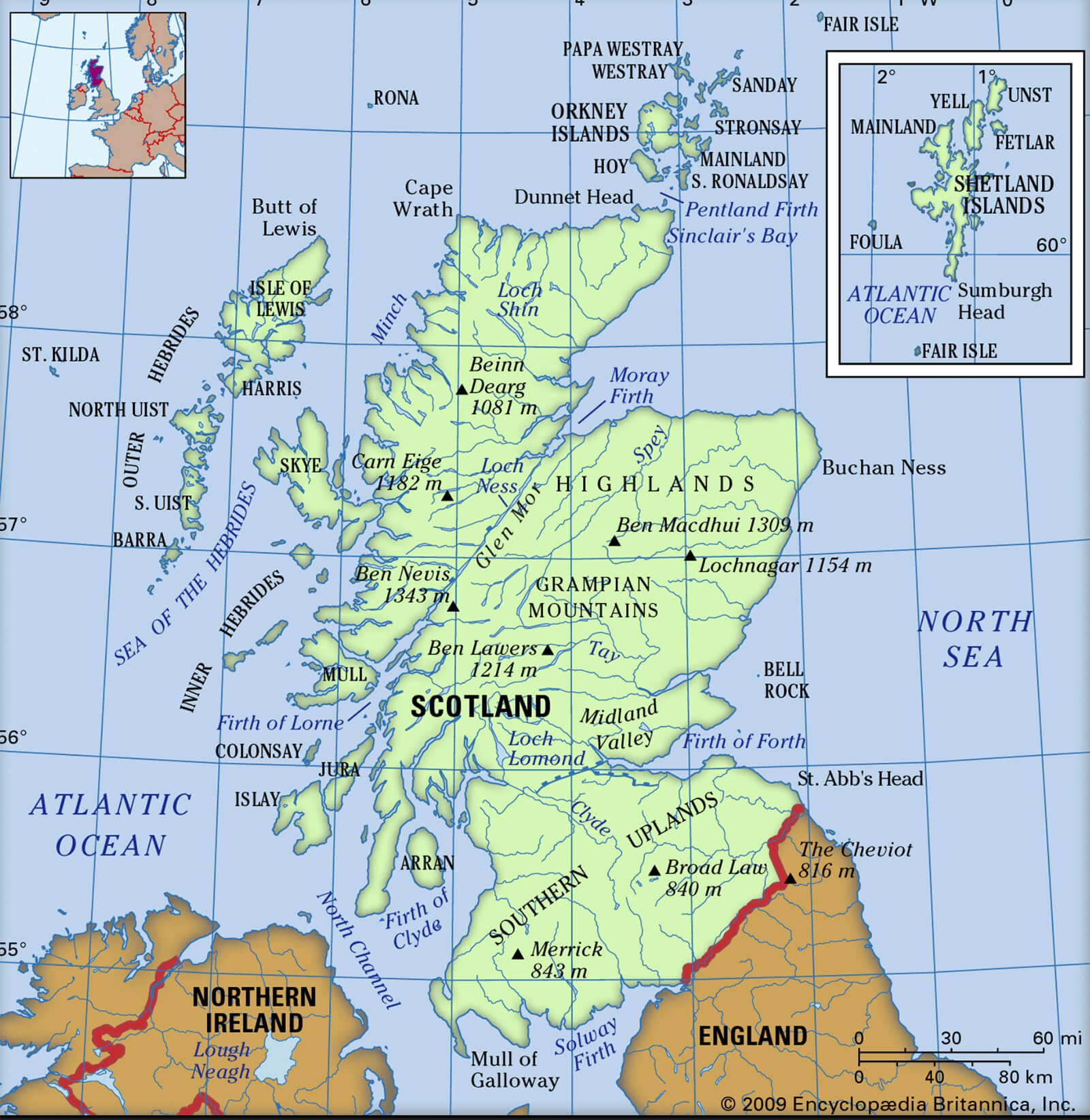
Scotland (photo courtesy www.britannica.com)
Narrower, more nutrient-rich rivers with tree cover, such as the Don and the Deveron, are better known for hosting thriving brown trout populations.
Having relocated to Deeside in late 2022, I fulfilled a lifelong ambition of fly fishing on local rivers and fisheries. River fishing in Scotland is highly regulated – you can’t just turn up with a worm on your hook and throw it in the water – and salmon fishing in particular is controlled and managed by the riparian landowners on either side of the river and their gamekeepers or ghillies (a Gaelic word meaning attendant or manservant).
Unless you know who to approach and where to go, you could end up having a very expensive and stressful fishing adventure with nothing to show for it.
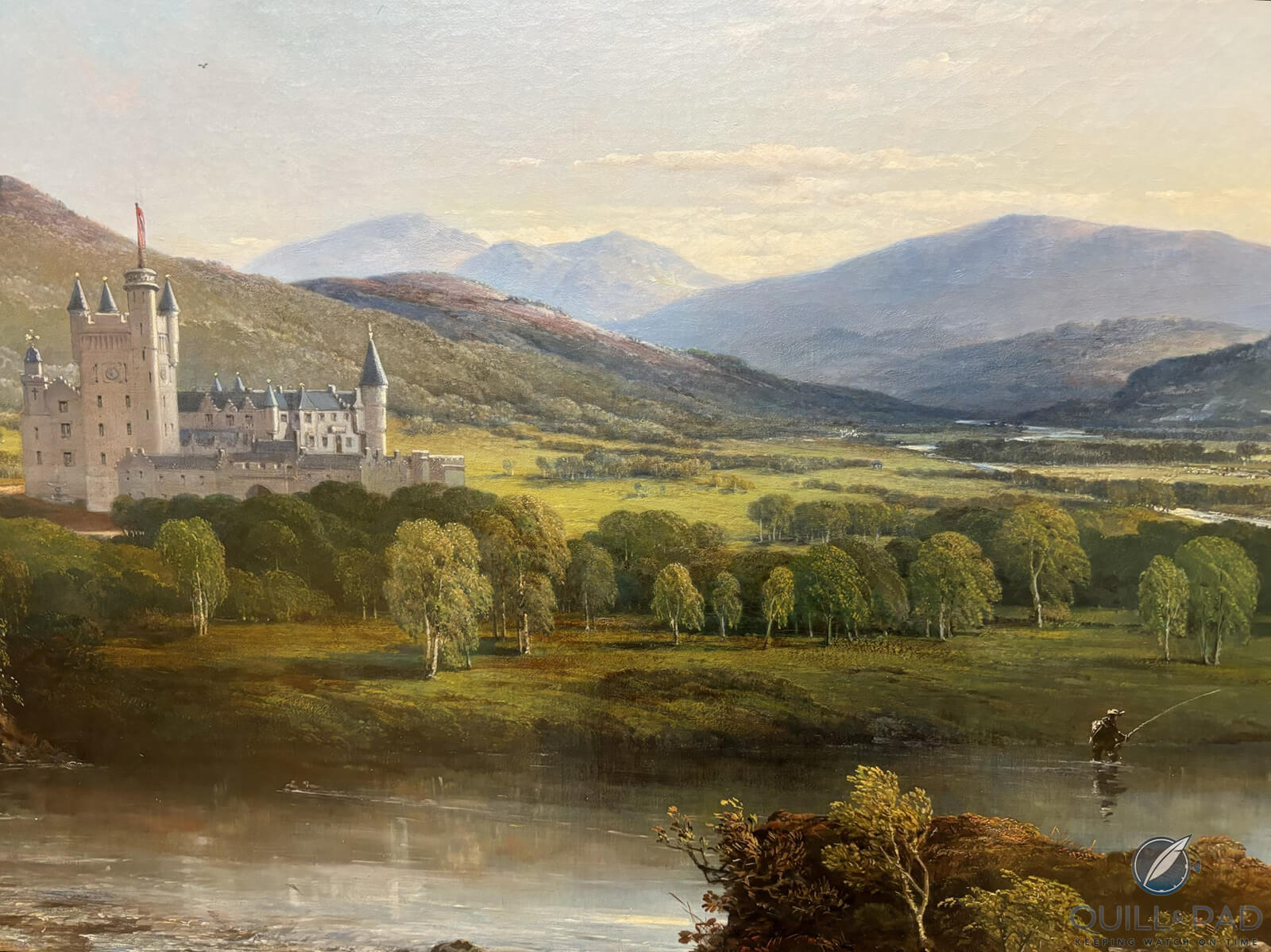
Balmoral castle on Royal Deeside. Note the prominence given to the over-sized angler. (Photo courtesy of Aberdeen Art Gallery)
Twin Peakes Fly Fishing
For some insights into fly fishing in Scotland, I drove west along the North Deeside Road to see Alastair Peake who, with his twin brother Will, runs the aptly named Twin Peakes Fly Fishing. They are based at the Milton of Crathes complex opposite Crathes Castle, about a mile east of Banchory.
——————————————————————————————–
——————————————————————————————–
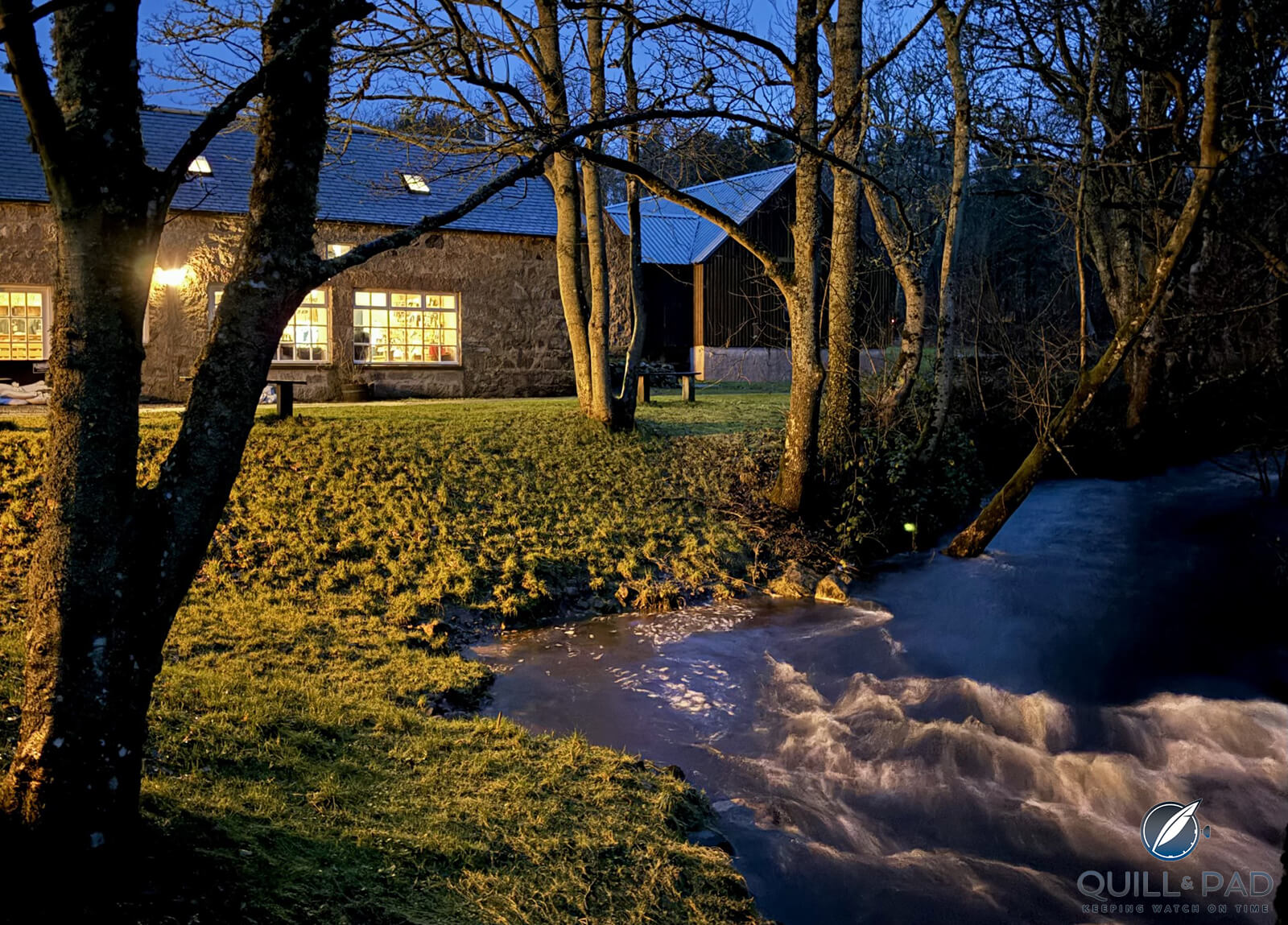
The Twin Peakes Fly Fishing shop in Scotland
Nestling on the bank of the Coy Burn just 50 yards from where it joins the Dee, Twin Peakes sell rods, reels and lines, waders and outdoor clothing, and flies, but take things to the next level by providing a one-stop shop fly fishing service, which effectively means that a visitor to the region who is suddenly overcome by the urge to catch a trout or salmon can book casting lessons, rent the necessary gear and be taken to a beat of the river where they stand a reasonable chance of hooking a fish, if not actually landing it, all within a day.
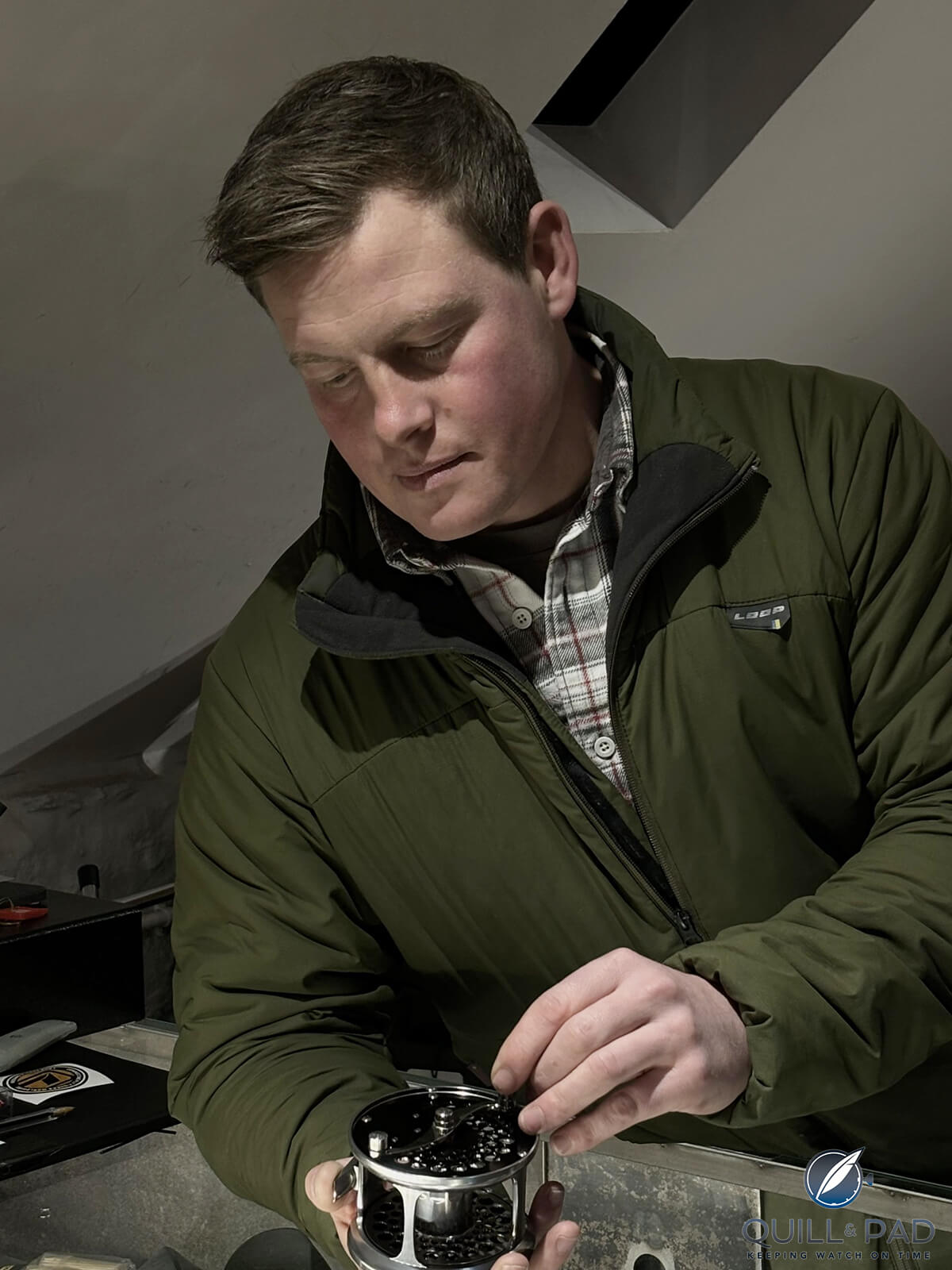
Alistair Peake of Twin Peakes Fly Fishing, examining a salmon reel (photo Colin Alexander Smith)
I asked Al, as he is known in the industry, how he and brother Will originally got into fly fishing.
“We grew up in Staffordshire, and my grandfather was an avid fly fisherman who used to visit Scotland to fish the rivers here. One of my earliest memories is going to visit grandad, and the first thing we always did was to head straight for the freezer where he always had one or two salmon that were bigger than we were! But as young lads we were not considered to be “ready” for fly fishing, so we spent our time fishing with bait for coarse species such as carp in canals, quarries and pit holes (former mines). But when we were around 11 or 12 we went to a Countryside Alliance fair where we were given a five-minute fly casting lesson, and handed a rod with a fly, and I caught a fish. After that I was hooked on fly fishing and focused on it exclusively.”
The brothers eventually earned their fly rods, and promptly got caught unwittingly poaching on what they thought was a trout lake but was a privately owned fishery; fortunately, the owner turned out to be a friend of their grandfather, who after accepting an apology and a bottle of scotch allowed them to fish there for free: the die was cast.
From then on, fly fishing largely determined the Peake brothers’ education and career choices. Vocational courses in gamekeeping were followed by work experience in Scotland and university degrees in Business and Tourism, which for Al included work experience on the prestigious Grimersta estate on the Isle of Lewis, with rapid promotion to the position of ghillie when the newly-appointed person failed to turn up.
——————————————————————————————–
——————————————————————————————–
At one point the Peake brothers ended up “ghillieing” on two adjacent beats of the Dee, at Aboyne and Dinnet, and began offering casting and fishing lessons in the evening after their ghillieing duties were done.
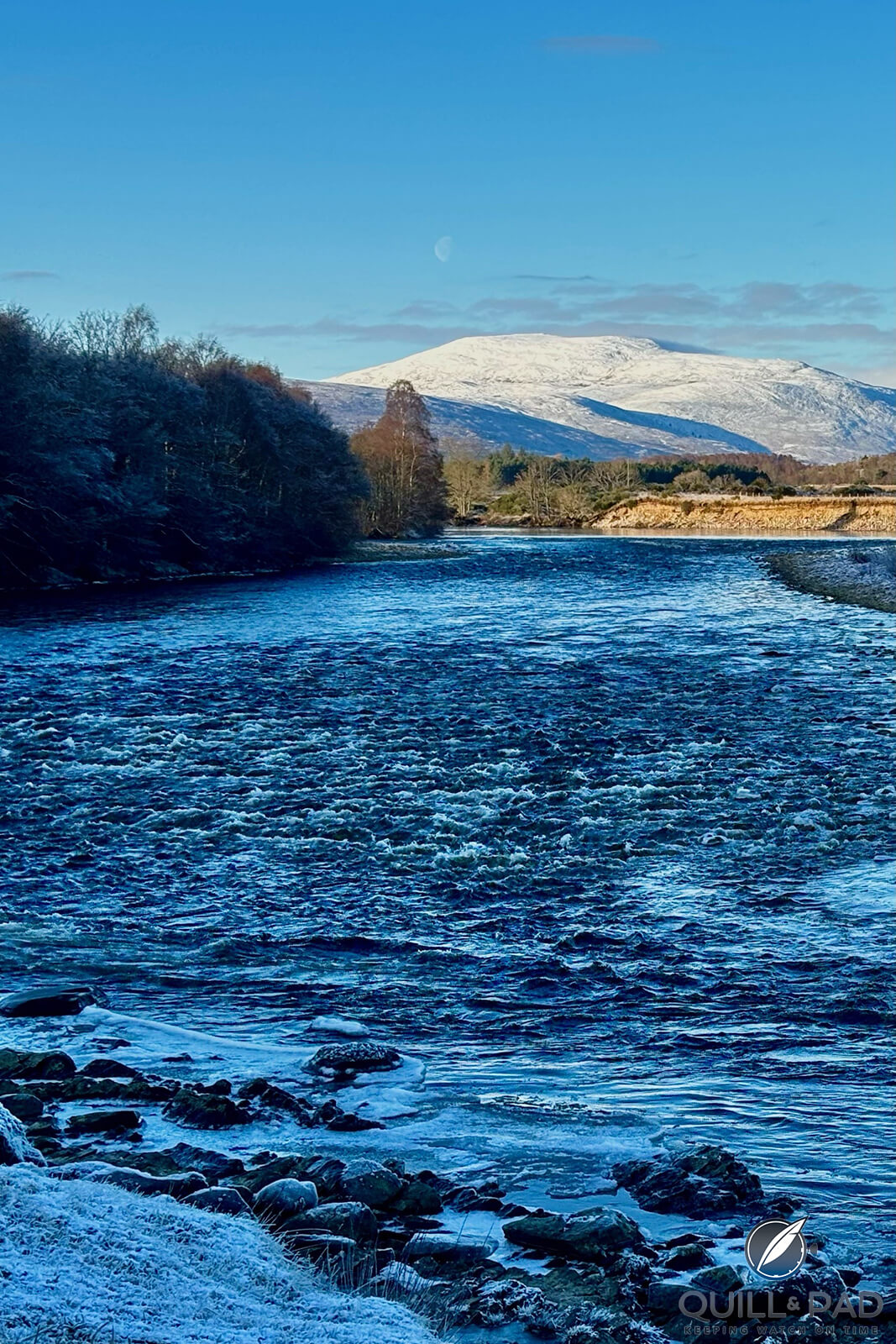
The River Dee above Aboyne (photo by Colin Alexander Smith)
At the same time, they were working in New Zealand during the close season in Scotland, where they came to the attention of Swedish rod manufacturer Loop Tackle, and became brand ambassadors in 2015. I pointed out to Al that even before Instagram was the big thing, they were living the “Influencer” life. Al laughs. “Our first joint venture was as Twin Peakes Media. I just wish we’d had better cameras in those days to record it all!”
Things then happened very quick succession: shortly after deciding that they needed a base for the fly fishing school, the property at Milton of Crathes on the Leys estate became available and the landlords, keen to have a fishing business on site, were willing to let them have access to 400m of the left bank of the Dee, right on their doorstep.
Next, the local ghillie retired, so the Peakes took over the stewardship of the entire beat. In lockdown-blighted 2021, Orvis closed all but two of its UK shops, including the one in Banchory, thus leaving Twin Peakes as the only fly tackle retailer on Deeside.
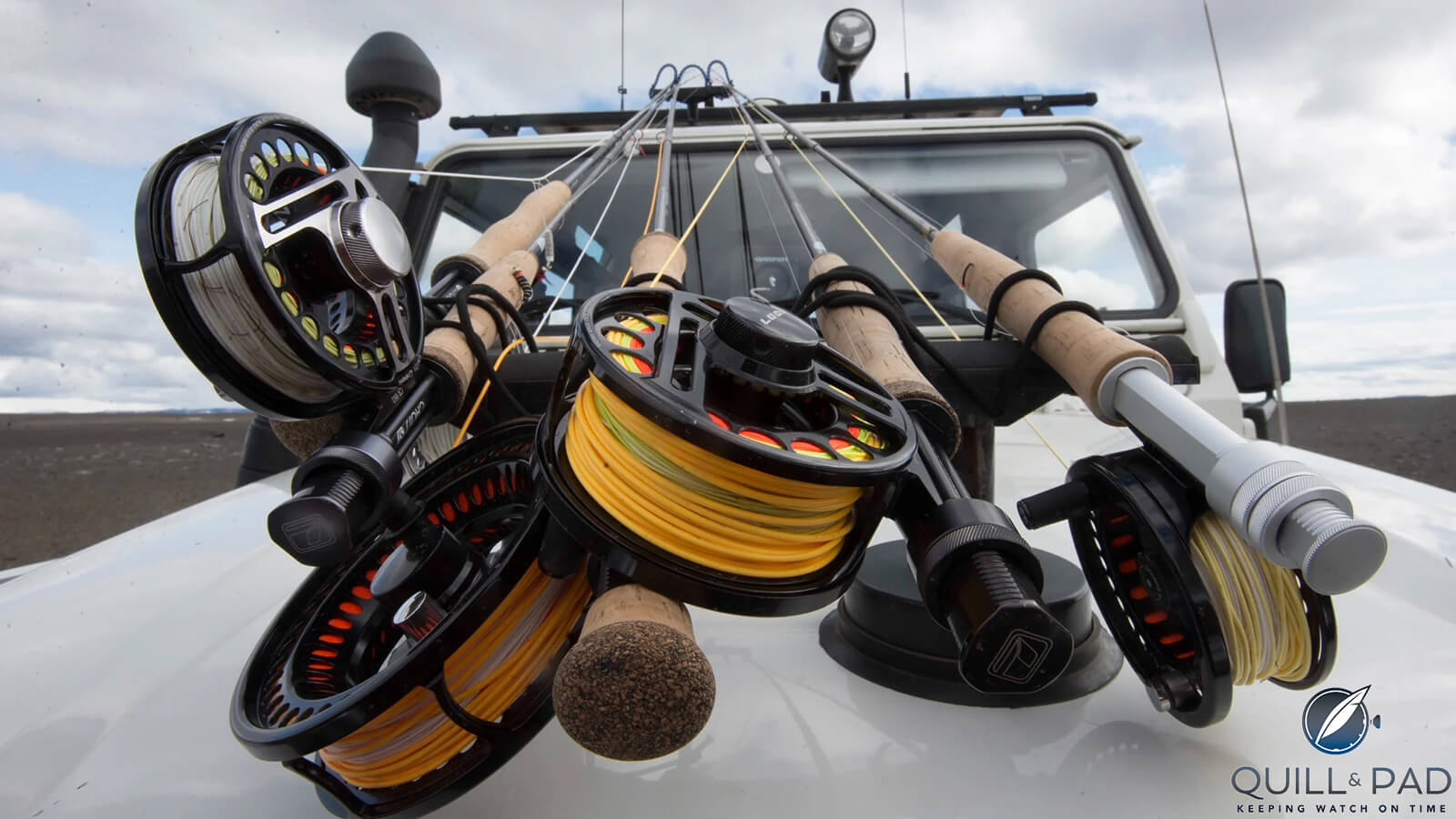
Reel-to-reel cacophony: loading up for a trip (photo courtesy of Twin Peakes Fly Fishing)
The brothers have now achieved their goal of creating a fly fishing school and shop that can provide would-be anglers with all of the requisite gear, teach them to cast a fly, take them fishing on a beat of the River Dee, and ultimately launch them as self-sufficient anglers – all within the context of a three-day course.
——————————————————————————————–
——————————————————————————————–
Their motto is “From first cast to first fish”. They also run introductory fishing sessions for local schoolchildren on still waters such as Raemoir Trout Fishery, and for experienced anglers they now offer international fishing trips to prime salmon waters in Chile, Norway, Iceland, Labrador and elsewhere.
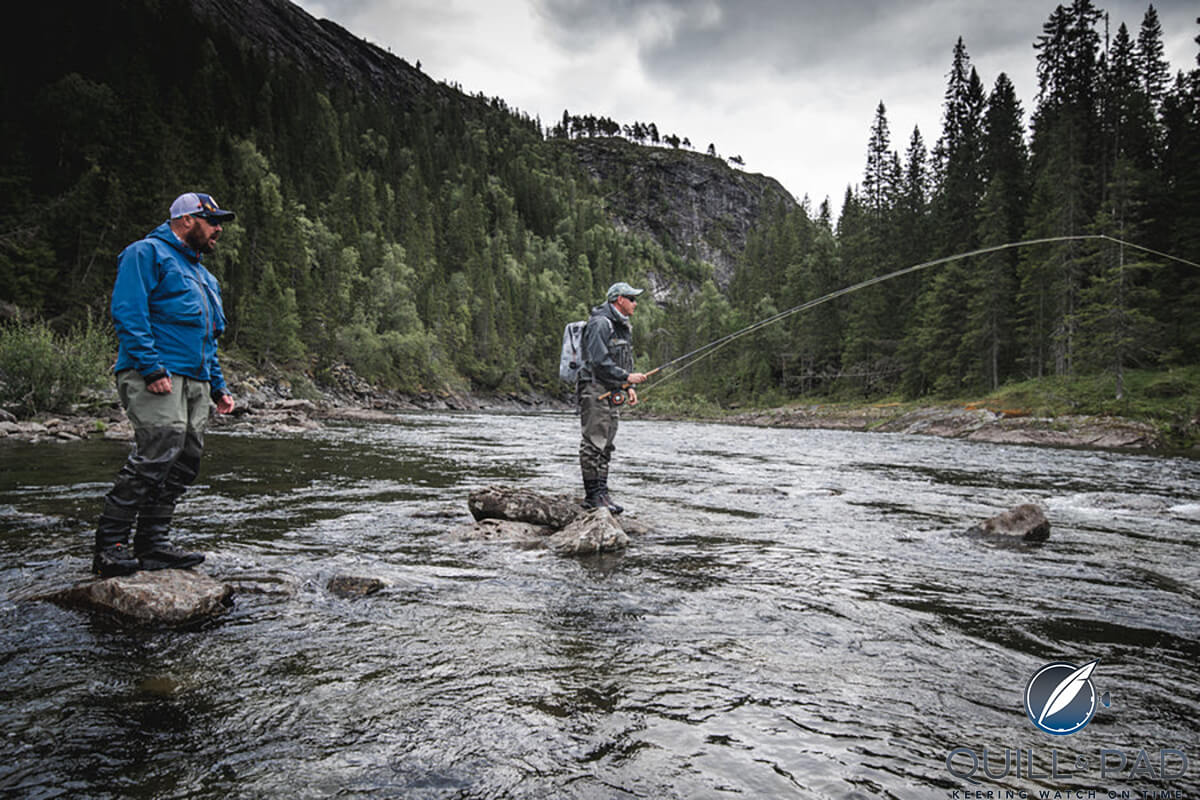
One-on-one coaching (photo courtesy of Twin Peakes Fly Fishing)
The Peakes are very aware that for an outsider wanting to fish for salmon in Scotland, the existing system of landownership and fishing rights on rivers such as the Dee is opaque, verging on impenetrable. “It’s rather like the hillwalking and climbing world, which I was very interested in at one point, explains Al.
You can’t actually just drive into the Cairngorms and wander up a hill, you need the right gear, and you need expert guidance. Eventually I realized it was going to be a long time and very costly before I could safely consider myself to be an autonomous climber.”
Similarly, in salmon fishing, unless you know someone who knows the right person, you could struggle to gain access to a productive beat of the river at the right time of the year. Certain periods on certain highly prized beats are booked up years in advance by the same anglers or groups of anglers.
Twin Peakes has made their services accessible to the general public, through their shop and website, but they are also able to arrange access to prime fishing. One of their most successful marketing ploys is to take a mobile roadshow truck to game fairs and events organized by local fishing clubs such as the Yorkshire Fly Fishers’ Club, the UK’s oldest.
——————————————————————————————–
——————————————————————————————–
I asked Al whether, as an angler now totally immersed in the activity from dawn to dusk, he still remembered his original fascination with fishing, and fly fishing in particular.
“Yes. There’s something about water – an infatuation, even. What lies beneath it, imagining what’s down there. It’s about building up a portfolio of knowledge through catching fish, and also by not catching fish.
The fascination of fly fishing, which sets it apart from all other forms of fishing, is the art of casting. Throwing out a relatively heavy fly line to place a fly, which may weigh a fraction of an ounce, exactly where you want it each time.
We discussed the therapeutic effects of both being outdoors in nature and being on, or even in, a loch or river. “I always say, if you have a problem, go on a fishing trip, and the bigger the problem, the longer the trip should be! By the time you get home, you will probably have found the solution to whatever was troubling you.”
“Anglers are eternal optimists, we have to be. And that sets us up for the vicissitudes of life. I remember fishing on a trip for four or five hours one day without a bite, and packing it in for a break. But an hour later I was back on the water, fired up and ready to catch again”.
Al explained his view of the various sub-disciplines even within fly fishing itself: stillwaters versus rivers, lures versus traditional flies, trout versus salmon, and so on. “My personal preference is for rivers, and I see stillwater fishing as a gateway to river fishing, just as coarse fishing was for us a gateway to fly fishing. I tried coarse fishing for a while, and bought a pole for fishing with bait, which is highly effective on small waters, but I realized it wasn’t for me. But there are plenty of anglers out there who will only ever fish stillwaters or will only fish lures”.
——————————————————————————————–
——————————————————————————————–
Apart from natural hill lochs, of which Scotland has an abundance and which can offer terrific trout and pike fishing, stillwaters are often stocked ponds. They offer a vibrant social component, perhaps attached to a club, whereas river fishing is a more solitary activity. It’s each to his own. I fish for salmon mostly, but come the month of May I am seriously conflicted between going out on the Dee for salmon, or taking my trout rod up to the Don, where monstrous trout are rising for dark olives!”
To a certain extent, salmon fishing is perceived as the preserve of the landed gentry and their well-heeled friends, so I asked Al about how accessibility to the sport can be broadened to reach those who may not have the requisite connections or budget. “As with any sport or hobby, there is a cost in terms of equipment, you’re probably looking at £750-1000 to be kitted out with a decent rod, reel and line and some waders (which compares favorably with what you would spend for road cycling, diving or hang-gliding, for example).
And you can hire gear before you decide to take the plunge. As for accessibility, we can guide you on that: a day’s fishing on the Dee can be had for £60 – 100, which is considerably less than taking your family to a football match or to see Taylor Swift!”
Al pointed out that they are of course keen to attract a younger generation into the sport, and one key factor in that is getting the parents on board, because initially children are dependent on their parents taking them fishing even if they are not involved themselves.
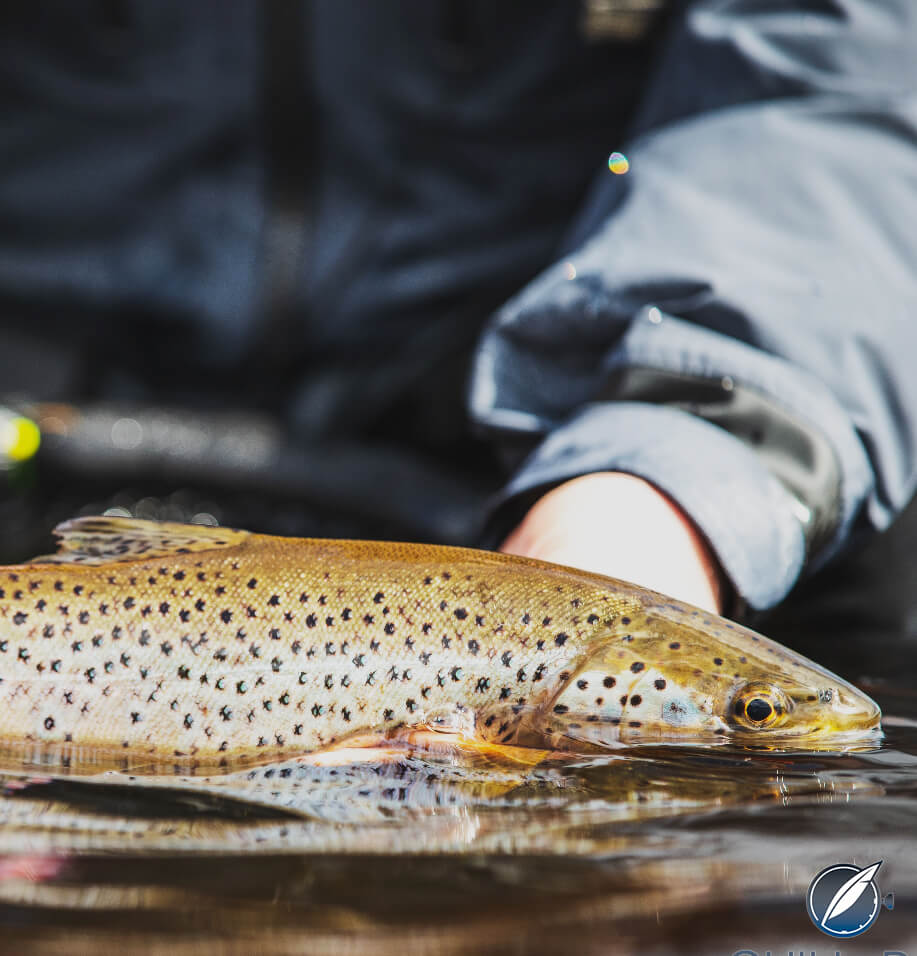
Bar of gold: a magnificent Aberdeenshire brown trout (photo courtesy of Twin Peakes Fly Fishing)
Trout & Salmon
I asked why certain rivers such as the Dee are regarded as salmon rivers, and others such as the Don are predominantly trout. “It’s mainly due to habitat – trout are constantly feeding so they require a high-nutrient habitat, as is found on narrower rivers with plenty of tree cover. Salmon are making their way up river to spawn, so food and tree cover are not an issue. That said, there are plenty of brown trout and sea trout on the Dee in April and May. But there is a human factor as well – Salmon anglers make their way downstream, while trout anglers fish upstream, and are required to give way to salmon anglers coming the other way. If they’re wading, they disturb the salmon lies, so it’s unworkable. Ultimately the landowners or ghillies must decide whether it’s going to be fished as a salmon river or a trout river.”
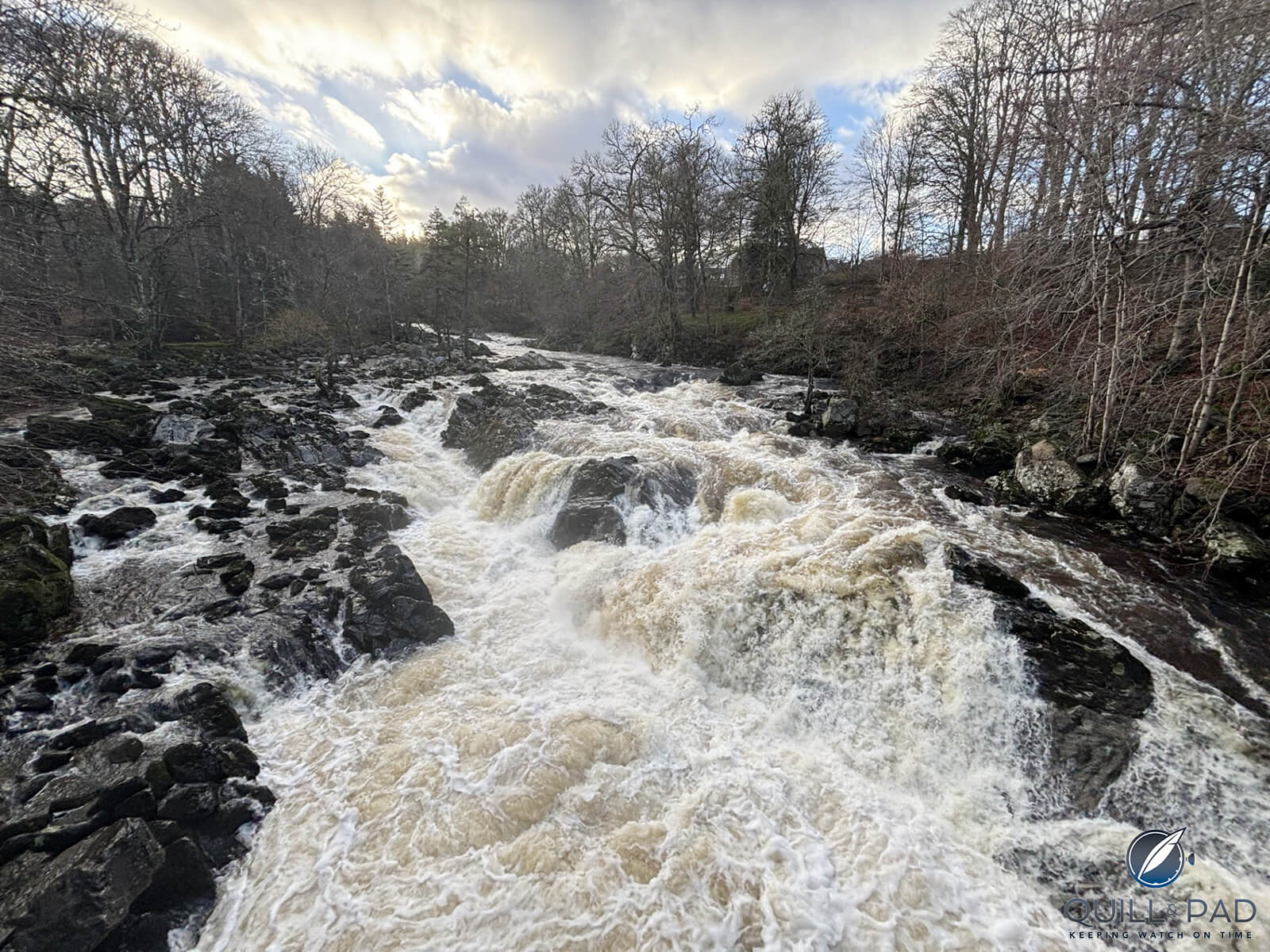
Falls of Feugh at Banchory, famous for its leaping Salmon in October (photo courtesy Colin Alexander Smith)
——————————————————————————————–
——————————————————————————————–
Salmon numbers on Scottish rivers
No discussion of Scottish salmon rivers nowadays can avoid the topic of declining salmon numbers. Atlantic salmon were officially deemed an endangered species by the IUCN at the recent Dubai COP, under the multiple threats of genetic and parasite contamination from salmon farms, invasive species such as pink salmon, rising ocean and river temperatures, river pollution, barriers, and dams, overfishing of habitats, etc.
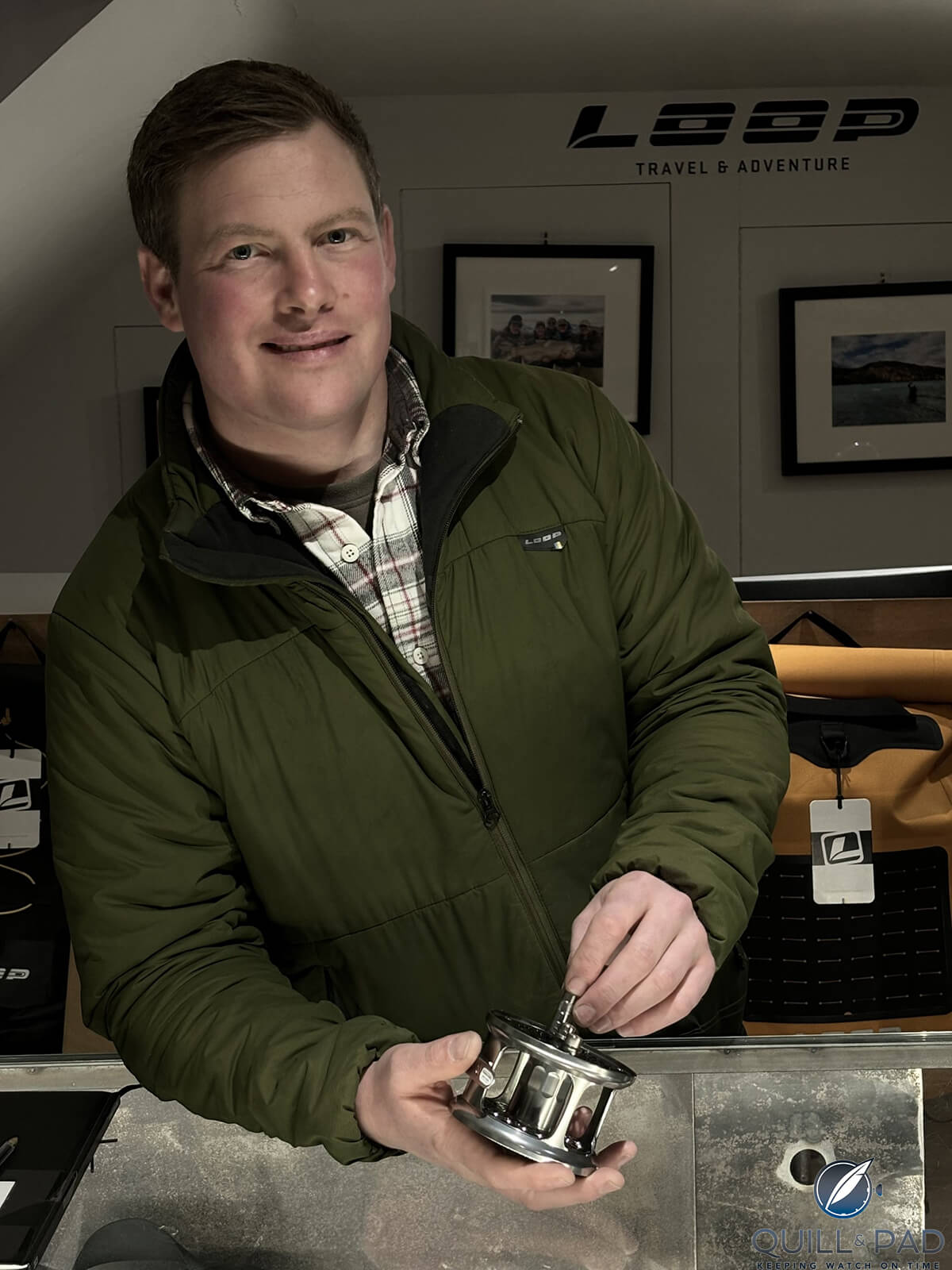
Alistair Peake of Twin Peakes Fly Fishing
This year’s catch figures for Scotland hit a new low, at around 32,000 salmon caught across all rivers, just a tenth of historical levels and down 58% on 2006 levels. “But people forget that the figure was the same in the early 1990s, and subsequently recovered, explains Al. It’s a long cycle, perhaps hundreds of years. Basically, when marine survival is poor, all rivers do badly – but when marine survival is good, all rivers do well. Habitat restoration is essential, especially up in the spawning grounds where creating tree cover reduces water temperature and provides a food source, but obviously it’s not a short-term fix.”
One thing is sure, however – the presence of anglers on Scotland’s rivers plays an essential role in the management of the country’s fisheries – they are their eyes and ears, ideally placed to collectively gauge changes in fish activity, water conditions and other parameters. Thankfully there are dedicated young professionals such as Al and Will Peake on hand to facilitate access for anglers of all ages to Scotland’s waters.
For more information, please visit www.twinpeakesflyfishing.com
You might also enjoy:
Mythbusting: 3 Persistent Patek Philippe and Rolex Myths Debunked
The How, What, When, Where And Why Of Seeing The Aurora Borealis, AKA Northern Lights
Leave a Reply
Want to join the discussion?Feel free to contribute!



Wonderful read, and would be a lifetime experience to make the trek to fish in Scotland. I have ventured to Labrador for Salmon, Trout and Spec’s, the romanticism of the pursuit is far beyond simply hooking a fish.
Glad you enjoyed it, Colton – you know who to look up if you’re in the area!
Great stuff, So envious.